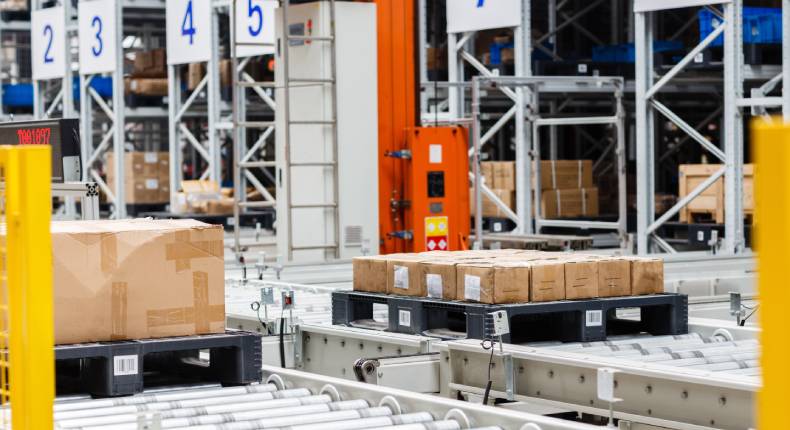Information
Legal information
Funded by


Automated storage systems are advanced technological solutions designed to manage and organize goods in warehouses with minimal human intervention. These systems optimize space usage, increase operational efficiency, and reduce errors associated with manual handling. They use a combination of software and hardware to control the flow of materials within the warehouse, from reception to distribution.
Índice de contenidos
ToggleThe operation of automated warehouses is based on the integration of advanced technology and automated processes that enable efficient and secure management of goods.
This operation relies on a combination of software and hardware that work together to optimize each stage of storage and distribution.
The technologies used in automated warehouses not only improve operational performance but also provide greater safety and control within the warehouse. The main technologies include:
Managing an automated warehouse focuses on the efficient integration and precise coordination between automated systems and technological infrastructure.
A key element is the continuous monitoring of operational processes using advanced data analysis tools and real-time monitoring, which optimize workflow, quickly identify any anomalies, and ensure the correct location and access to each item.
The implementation of Warehouse Management Systems (WMS) is essential, as they control and monitor all processes from the receipt of goods to the dispatch of orders, allowing complete traceability.
The data generated by these systems are necessary for both tactical and strategic decision-making, improving the warehouse’s efficiency and responsiveness.
Automated storage systems stand out as a strategic solution in warehouse management. They optimize space, increase productivity, reduce errors, improve workplace safety, and provide comprehensive inventory control. The main benefits of storage automation include:
The implementation of automated storage systems encompasses a variety of solutions adapted to different types of products and logistical needs.
These systems optimize space, improve operational efficiency, ensure the maintenance of specific conditions for perishable products, and increase accuracy in order preparation.
The main types of automated storage systems are detailed below:
These systems are designed to handle individual load units, such as pallets or large boxes.
They use cranes, stacker cranes, and other equipment to move loads efficiently and precisely within the warehouse, enabling safe and quick handling of bulky and heavy goods.
Ideal for storing small parts and boxes, these systems are more compact and usually employ lightweight stacker cranes that move quickly between shelves.
They are perfect for high-turnover operations and products that require quick and frequent access.
These systems utilize the warehouse height to maximize storage space.
They are especially useful in facilities with limited floor space but high ceilings, allowing for more efficient use of available volume and reducing the necessary ground floor space.
Designed for products that require controlled temperature conditions, these systems ensure that perishable products are kept in optimal conditions during storage and transport.
They are essential for the food and pharmaceutical industries, where product integrity is critical.
These systems use robots and other automated devices to select and pick specific products from shelves, improving the speed and accuracy of order picking.
This reduces order preparation time and minimizes human errors, increasing customer satisfaction.
These autonomous vehicles move through the warehouse without a driver, transporting goods between different areas and improving operational efficiency. AGVs can easily integrate with other automated systems and adapt to different warehouse layouts, increasing flexibility and productivity.
Choosing the right type of automated warehouse depends on several factors, including the nature of the stored products, the volume of operations, the available space, and the specific needs of the company.
Therefore, the key to a successful implementation is to conduct a detailed analysis of the business processes and requirements before making a decision. Consulting with logistics experts and suppliers of automated storage solutions can be very helpful in selecting the most appropriate system, thus ensuring significant and sustainable long-term return on investment.
Information
Legal information
Funded by


